
Verb ing spelling rules examples Spelling rules, Teaching english, Teaching spelling
So, these three expressions; 'be used to,' 'be accustomed to,' and 'adjust to' are also followed by the -ING form of the verb. Finally, we have some phrasal verbs. Phrasal verbs that end in 'to' can also be followed by the -ING form. The two most common ones are probably look forward to and get around to.
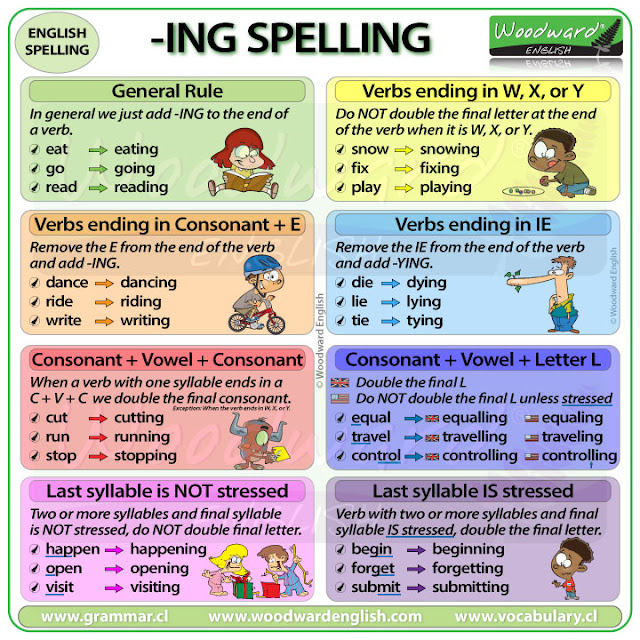
Spelling Rules ING Effortless English
There are two basic reasons to add -ing to the end of a verb: to form one of the progressive tenses or to make a gerund. We use the progressive tenses to talk about on-going actions. There are progressive tenses for the past, present, and future. For example, the present progressive looks like this: "I am walking to work right now."
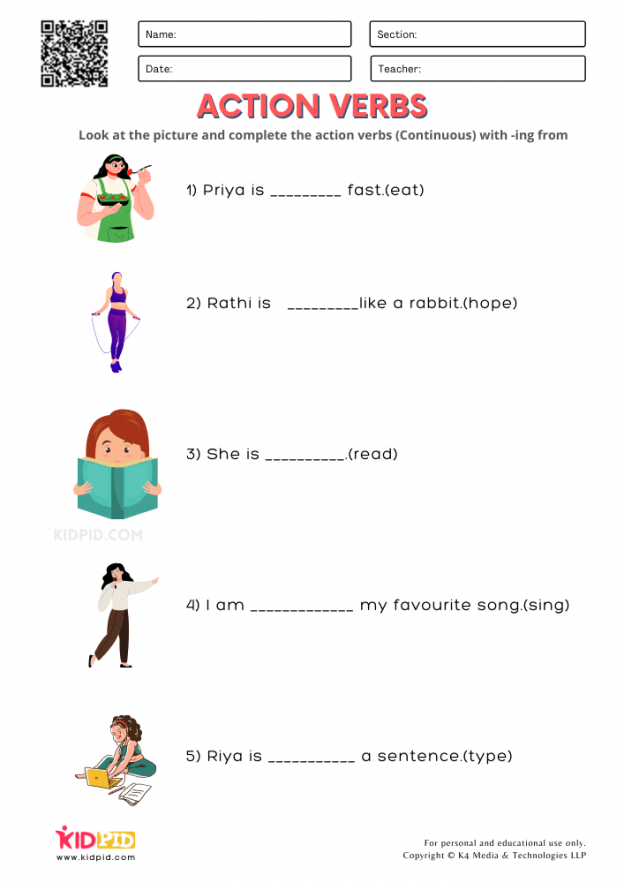
Action Verbs ending in "ing" Printable Worksheets for Grade 1 Kidpid
The final word in the title of the Bob Dylan song "The Times They Are a'Changin" is an example of a-verbing. Columbia Records. A-verbing is a form of the verb (usually the present participle) in which the base is preceded by the prefix a- . The term a-verbing was introduced by Walt Wolfram and Ralph W. Fasold in The Study of Social Dialects in.

ING Spelling rules Spelling of verbs ending in ING in English YouTube
Verbs '-ing' forms '-ing' forms Level: beginner We can use the - ing form of a verb: as a noun: I love swimming. Swimming is very good for your health. You can get fit by swimming regularly. as an adjective: The main problem today is rising prices. That programme was really boring. He saw a woman lying on the floor. - ing forms as nouns
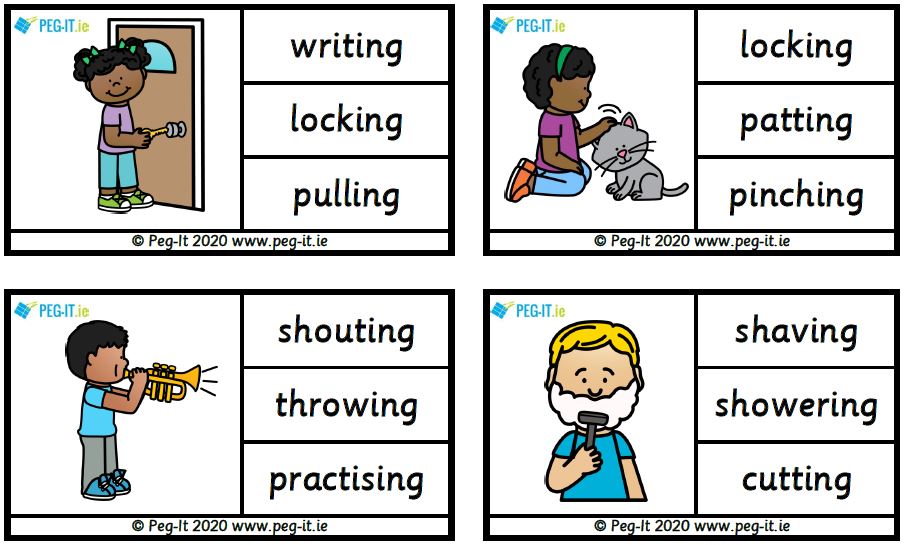
ing Verbs Peg IT
The progressive is the verb form we use to show current ongoing action or action that hasn't been completed or action that is not necessarily ongoing at the moment we read about it but ongoing in the sense that it happens regularly.
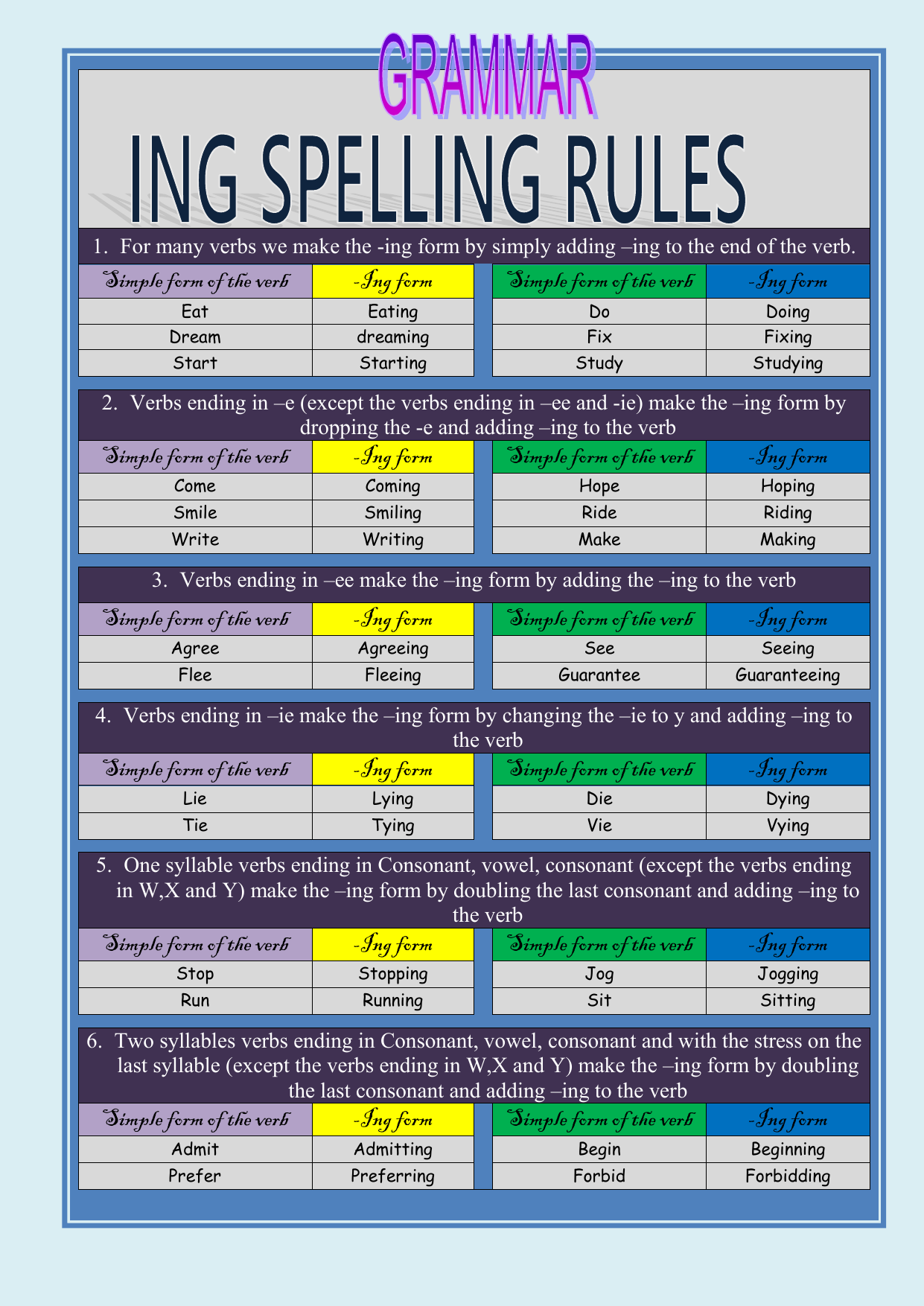
ing rules
For verbs that end with one -e, drop the -e and add -ing. Note that these verbs the -e sound at the end is silent. (e.g., believe, bake, take, move). achieve — achieving mate — mating live — living take — taking strike — striking bike — biking make — making have — having dance — dancing But:
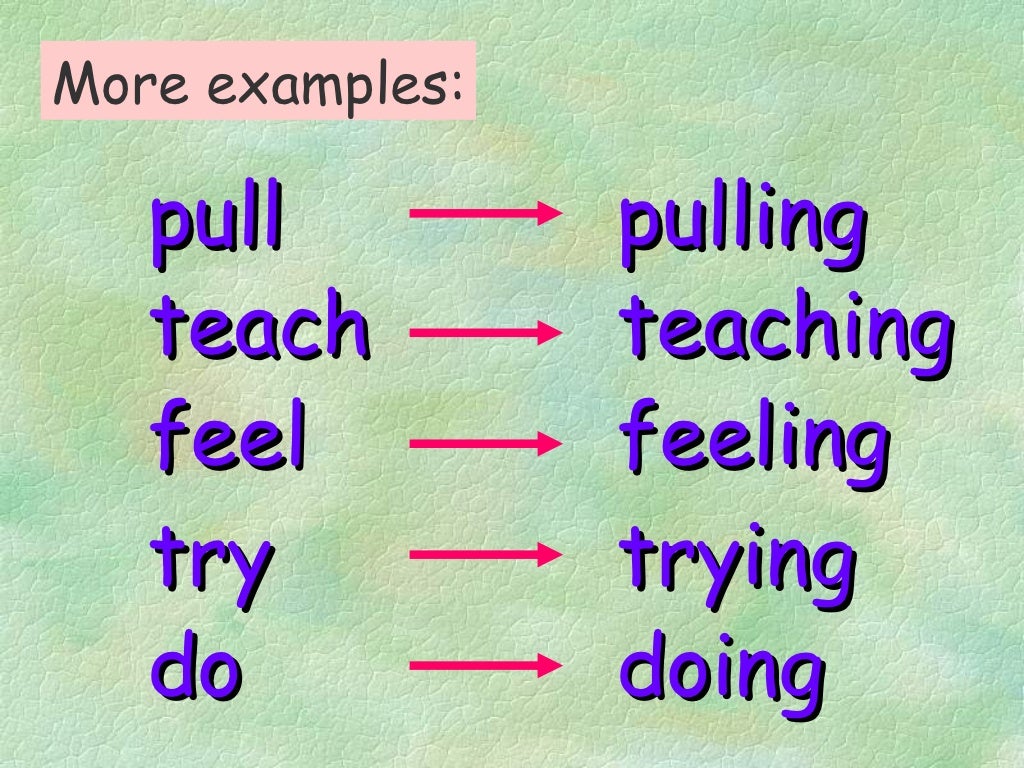
Verbs ending in ing (Present Continuous)
To answer the original question: Yes, gerunds all end with -ing, simply by definition. A gerund is, in Latin, a form of the verb which can be construed as (i.e. has functional characteristics of) a noun - it can act as subject or object of a verb, for example, or can take a plural ending.

Verb Endings (s, ed, ing) The Curriculum Corner 123
Find verb, test if -ing is describing a noun, and if not then you have a gerund. [Boxing] is a [challenging] sport. <-- sentence with both a gerund -ing, and an adjective -ing. And so if the Adjective and the Gerund/Noun Phrase tests have failed, then you have a verb. Just in case test it: 3a. Verb -ing usually is either a combination of a verb.

Verbs Ending In Ing Worksheets Worksheets For Kindergarten
After some verbs use of another verb both infinitive and with ending -ing is possible. It does not affect the meaning of a sentence: verb. example. like. I like watching / to watch TV in the evening. hate. She hates getting up / to get up early. love.

Speech Therapy with Miss Nicole ING verbs
1. do one's shopping 2. do one's shopping at; do business with; be a customer or client of More Definitions → More Definitions → More Common Verbs → 368 more 6-Letter Verbs Ending With ING → 1733 more 7-Letter Verbs Ending With ING → 2407 more 8-Letter Verbs Ending With ING → 3055 more 9-Letter Verbs Ending With ING → adpressing advocating

Present Continuous Spelling Rules Useful ING Rules • 7ESL
Verbs that end with ING We have listed 89 verbs that end with ING for you in this WordMom word list. All these verbs ending with ING were verified by specialists in the English language. Read more CITE / SHARE b bring being blessing bowstring bolling bigging c cling crossing ceiling chafing carding childing colling d ding draining derdoing e

English ing spelling changes
the - ing form, the past form, and the past participle form. The. - ing ending for English verbs is used in several different situations: 1. The -ing ending is used to show the progressive. aspect (progressive / continuous verb tenses). The progressive aspect shows that an action is / was /. has been / had been / will be (etc.) in progress at a.

Verbs ending in “ing” YouTube
A verb ending in -ing is either a present participle or a gerund. These two forms look identical. The difference is in their functions in a sentence. Present participles A present participle is most commonly used as part of the continuous form of a verb, after verbs of perception, after verbs of movement, or as an adjective.

Words and Pictures ending with Ing Teaching Resources
In English grammar, " -ing form" is a contemporary linguistic term for the present participle and gerund: any verb form that ends in -ing . In the book International English Usage (2005), Hancock and Todd note that the term " -ing form" is "neutral as to the function of a verb-derived -ing form." Examples and Observations
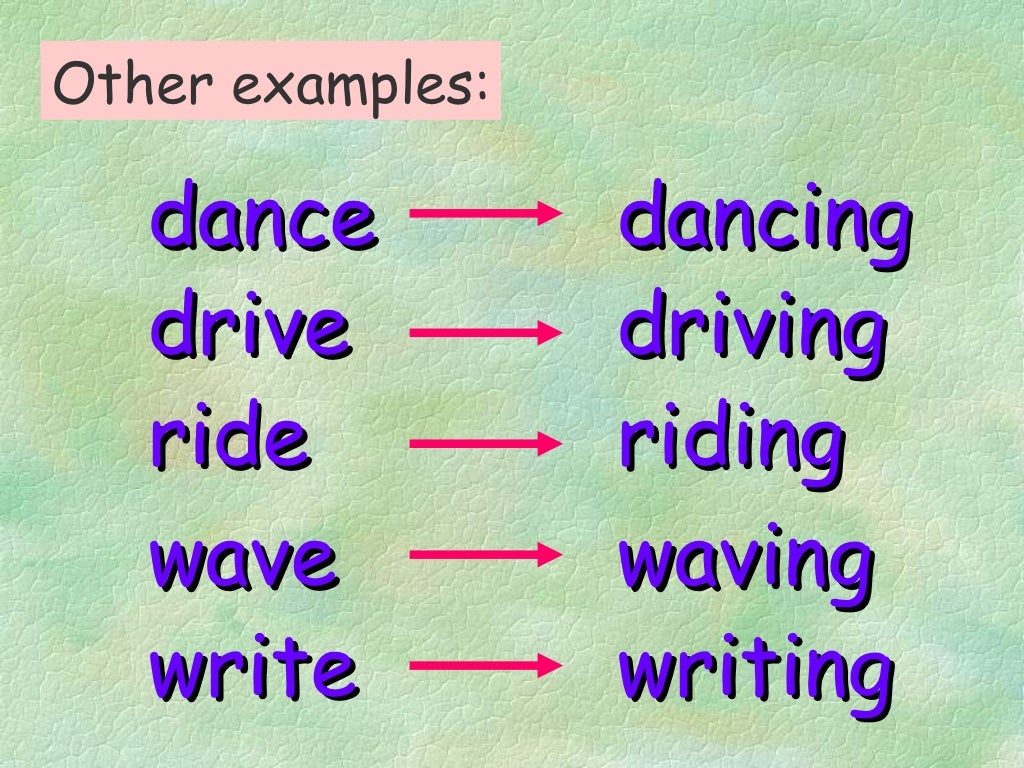
Verbs ending in ing (Present Continuous)
from English Grammar Today Verbs followed by a to -infinitive Some verbs can be followed immediately by a to- infinitive: I can't afford to go on holiday. It began to rain. She hopes to go to university next year. My mother never learnt to swim. Did you remember to ring Nigel? Verbs followed by -ing -ing but not to- infinitive
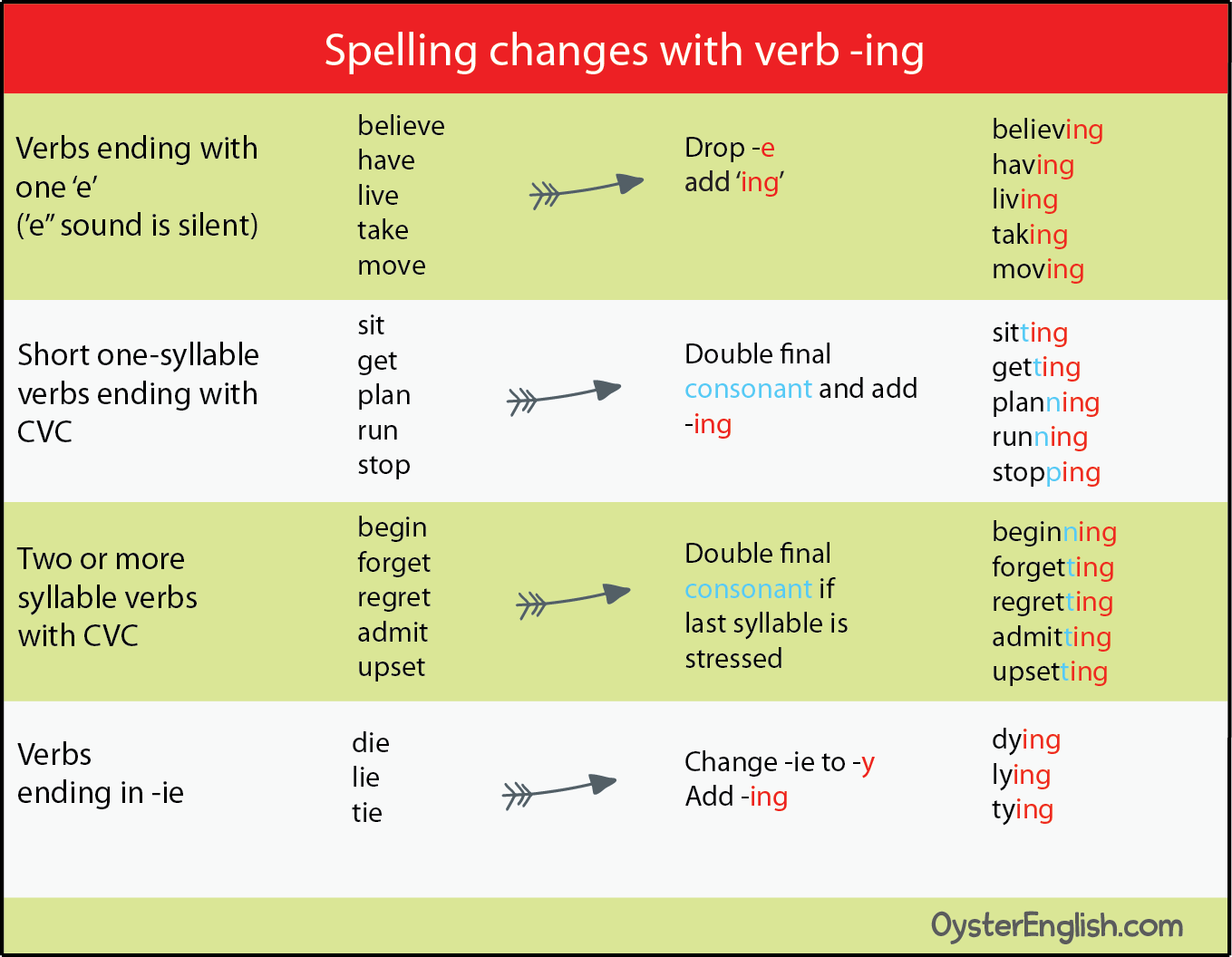
English ing spelling changes
For many verbs we make the ING form by simply adding -ING to end of the verb. eat - eating; speak - speaking; cook - cooking; start - starting; do - doing; stay - staying; fix - fixing; try - trying; Verbs ending with -e (with the exception of verbs ending in -ee and -ie) Drop the -e and add ING.